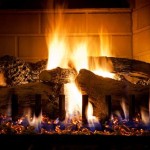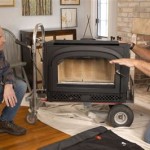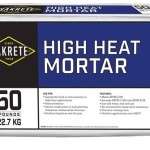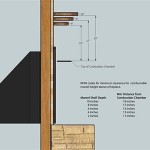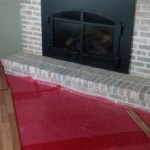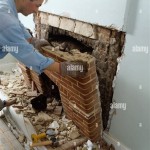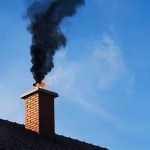How To Clean Soot Off Fireplace Brick
Fireplaces offer warmth and ambiance, but regular use inevitably leads to soot accumulation on the surrounding brickwork. This soot, a byproduct of incomplete combustion, is not only unsightly but can also detract from the visual appeal of the fireplace and, potentially, the overall air quality of the room. Therefore, knowing how to effectively clean soot from fireplace brick is essential for maintaining both the aesthetics and functionality of this central feature.
The process of cleaning soot from fireplace brick requires patience and the use of appropriate tools and cleaning solutions. The difficulty of the task depends on the severity of the soot buildup, the type of brick, and whether the brick has been sealed or painted. Proper preparation and careful execution are crucial to prevent damage to the brick surface and ensure a satisfactory outcome. This article outlines a comprehensive guide to cleaning soot from fireplace brick, covering essential preparation steps, a range of cleaning methods, and important safety considerations.
Preparation is Key
Before commencing any cleaning procedure, thorough preparation is paramount. This involves protecting the surrounding area, gathering the necessary supplies, and performing a preliminary assessment of the soot buildup and brick condition. Skipping these steps can lead to more extensive cleaning efforts later or, worse, damage to the fireplace and its surroundings.
The first step is to protect the area around the fireplace. Lay down drop cloths or plastic sheeting to safeguard flooring, furniture, and carpets from dust, soot, and cleaning solutions. Secure the coverings with painter's tape to prevent them from shifting during the cleaning process. It is also advisable to wear old clothes or protective garments, as soot can easily stain clothing.
Next, gather all the necessary cleaning supplies. The specific items required will depend on the chosen cleaning method, but the following are generally recommended: a stiff-bristled brush (preferably with synthetic bristles to avoid damaging the brick), a vacuum cleaner with a brush attachment, a spray bottle, a bucket, sponges, cleaning solutions (such as trisodium phosphate (TSP), dish soap, or commercial brick cleaner), rubber gloves, and safety glasses. Having all these items readily available will streamline the cleaning process and enhance efficiency.
Before applying any cleaning solution, it is essential to assess the extent of the soot buildup and the condition of the brick. Determine whether the brick is sealed or unsealed, and whether it has been painted or treated in any way. This information will help determine the most appropriate cleaning method and prevent damage to the brick surface. For example, harsh chemicals may damage painted brick, while acidic cleaners may etch certain types of stone.
A preliminary cleaning can be done using the vacuum cleaner with the brush attachment to remove loose soot and debris. Gently vacuum the entire brick surface, paying particular attention to crevices and mortar joints. This initial step will significantly reduce the amount of soot that needs to be addressed during the subsequent cleaning stages. After vacuuming, use the stiff-bristled brush to further dislodge any remaining loose soot.
Cleaning Methods for Soot Removal
Several cleaning methods can be employed to remove soot from fireplace brick, ranging from mild solutions for light soot buildup to more aggressive treatments for stubborn stains. The choice of method will depend on the severity of the soot, the type of brick, and personal preference. It is always recommended to start with the gentlest method and gradually escalate to more powerful solutions if necessary.
Dish Soap and Water: For light soot buildup, a simple solution of dish soap and water can be surprisingly effective. Mix a few drops of dish soap into a bucket of warm water. Dip a sponge into the soapy water and gently scrub the brick surface. Rinse the sponge frequently and wring out excess water to avoid saturating the brick. After scrubbing, rinse the brick with clean water and allow it to air dry. This method is suitable for painted brick and brick with a light coat of soot.
Trisodium Phosphate (TSP): TSP is a stronger cleaning agent that can effectively remove more stubborn soot stains. However, it is important to handle TSP with care and to follow the manufacturer's instructions precisely. Wear rubber gloves and safety glasses when using TSP, and ensure adequate ventilation in the room. Mix TSP with water according to the package directions. Apply the solution to the brick surface with a sponge or brush, and allow it to sit for a few minutes. Scrub the brick with a stiff-bristled brush, then rinse thoroughly with clean water. TSP can be harsh on certain surfaces, so it is crucial to test it in an inconspicuous area first to ensure it does not damage the brick.
Commercial Brick Cleaners: A variety of commercial brick cleaners are available on the market, specifically formulated to remove soot and other stains from brick surfaces. These cleaners typically contain stronger chemicals than dish soap or TSP, and should be used with caution. Read the product label carefully and follow the manufacturer's instructions. Test the cleaner in an inconspicuous area before applying it to the entire brick surface. Apply the cleaner with a sponge or brush, allow it to sit for the recommended time, scrub the brick, and rinse thoroughly with clean water. Consider using a specialized brick cleaner for unique brick types or delicate surfaces.
Baking Soda Paste: For a more natural and less abrasive option, a paste made from baking soda and water can be used to remove soot. Mix baking soda with water to form a thick paste. Apply the paste to the soot-covered areas of the brick and allow it to dry completely. Once the paste is dry, scrub it off with a stiff-bristled brush. Rinse the brick with clean water to remove any remaining residue. This method is gentle and can be used on a variety of brick surfaces, but it may require multiple applications to remove stubborn soot stains.
Vinegar Solution: Another environmentally friendly cleaning option is a solution of white vinegar and water. Mix equal parts white vinegar and water in a spray bottle. Spray the solution onto the soot-covered brick surface. Allow it to sit for a few minutes, then scrub the brick with a stiff-bristled brush. Rinse the brick with clean water to remove any vinegar residue. Vinegar is a mild acid that can help to dissolve soot and other grime, but it should be used with caution on certain types of stone, as it may cause etching.
Post-Cleaning Care and Prevention
Once the soot has been successfully removed from the fireplace brick, it is important to take steps to protect the brick and prevent future soot buildup. This includes sealing the brick, maintaining the fireplace, and ensuring proper ventilation.
Sealing the brick can help to prevent soot from penetrating the surface, making it easier to clean in the future. Apply a brick sealant according to the manufacturer's instructions. Ensure that the brick is clean and dry before applying the sealant. Select a sealant that is appropriate for the type of brick and the intended use. Some sealants are designed to enhance the appearance of the brick, while others are more focused on protection. Periodic reapplication of the sealant may be necessary to maintain its effectiveness.
Regular maintenance of the fireplace is essential for preventing excessive soot buildup. Have the chimney professionally cleaned and inspected annually to remove creosote and other debris that can contribute to soot formation. Ensure that the damper is functioning properly to facilitate proper airflow. Use seasoned firewood, as wet or green wood produces more smoke and soot. Avoid burning trash or other materials that can create excessive smoke and harmful emissions.
Proper ventilation can also help to reduce soot buildup. Ensure that the room is adequately ventilated when the fireplace is in use. Open a window or door to allow fresh air to circulate. Consider installing a fireplace insert or glass doors to improve combustion efficiency and reduce smoke emissions. These measures can help to minimize soot formation and maintain cleaner air quality in the room.
Finally, after cleaning, inspect for any damage to the brick or mortar. If cracks or crumbling are present, consider repairing them to prevent further deterioration. Repointing the mortar joints can help to restore the structural integrity of the fireplace and enhance its appearance.

How To Clean Soot Off Brick Fireplaces Anew

4 Ways To Clean Soot From Brick Wikihow

How To Clean Fireplace Bricks Simple Practical Beautiful

How Fo I Remove Fireplace Soot Smoke Hometalk

4 Ways To Clean Soot From Brick Wikihow

Cleaning Soot Off Fireplace Stone And Brick

How To Clean Fireplace Brick Soot Marks And Grime Hometalk
White Swan Properties Blo How To Clean Soot From Fireplace Brick

How To Clean Fireplace Bricks 9 Steps With S Wikihow

4 Ways To Clean Soot From Brick Wikihow
Related Posts

